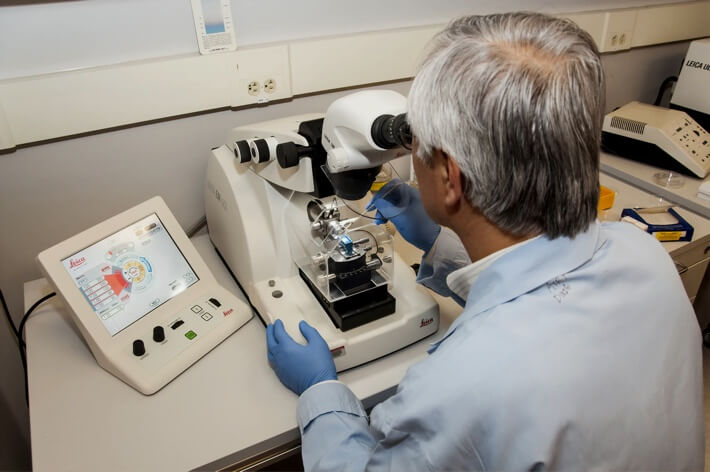
Attenuated Total Reflectance (ATR)
$99 Base price View My Quote RequestRutherford Backscattering Spectrometry (RBS)
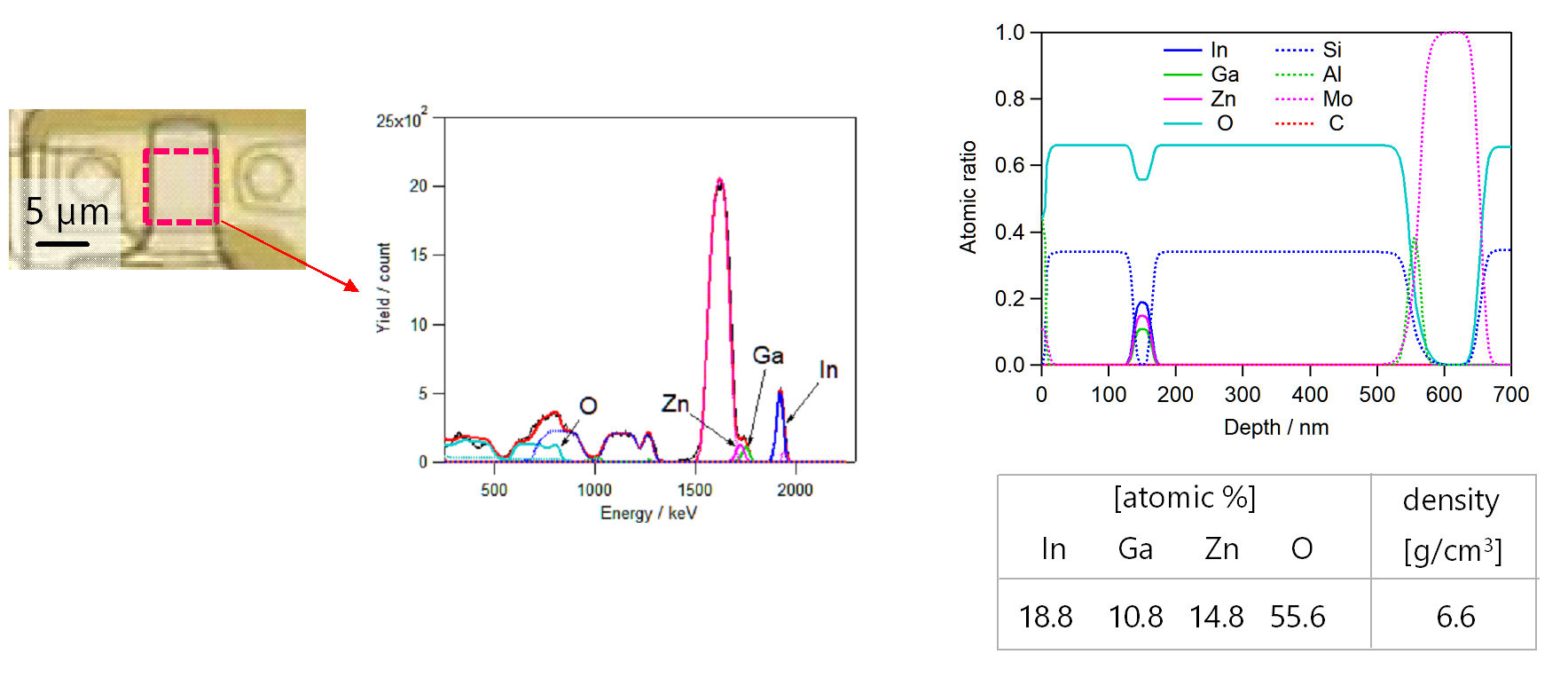
Rutherford Backscattering Spectrometry (RBS) is the most accurate, quantitative surface spectroscopy method available for analyzing elemental composition. RBS can also be used to generate depth profiles and can be used to measure film density and analyte thickness.
- Best accuracy for elemental composition analysis in surfaces (comparable to Inductively Coupled Plasma Auger Electron Spectroscopy – ICP-AES – and CHN; with better light-element accuracy than ICP-AES)
- Able to measure concentrations of light elements including Hydrogen and Deuterium
- Analysis possible under vacuum and alternative atmosphere conditions
- Density analysis in micron-scale regions can achieve : no other analytical method other than Micro-RBS
- No standards or reference samples are required for composition analysis
- Higher sensitivity for heavier elements than lighter elements (e.g., 5 at.% for Carbon vs. several 10’s of ppm for Lead): Combination with NRA can improve the light element sensitivity
- Limited sites world wide to do this type of work
Technical Specifications:
Learn More:

Micro-RBS measurement of IGZO composition and density in TFT: analysts achieved accurate composition and density measurement in a micron-scale region of the sample to ensure consistent composition analysis from R&D phases to production device.
From: Toray Research Center
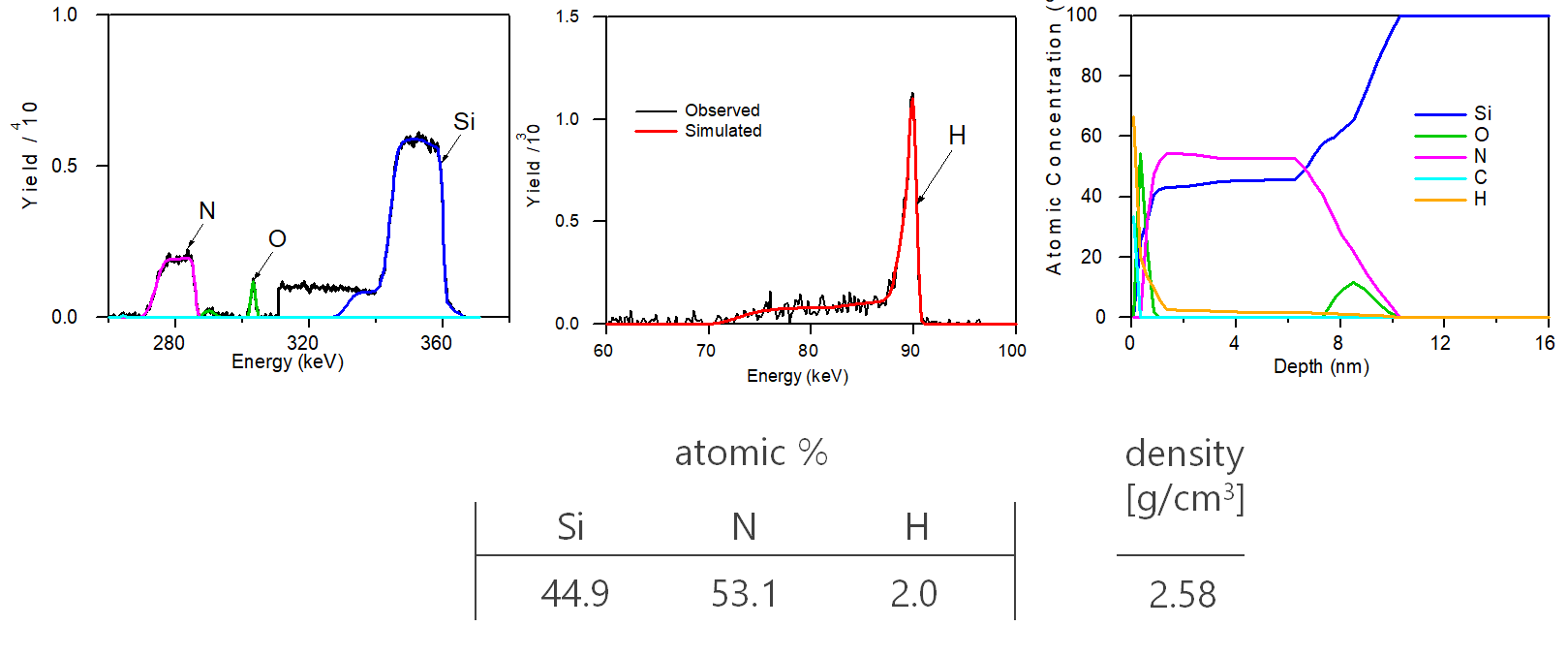
High-resolution RBS measurement of the composition and density of an 8 nm SiN overlayer on Silicon substrate.
From: Toray Research Center
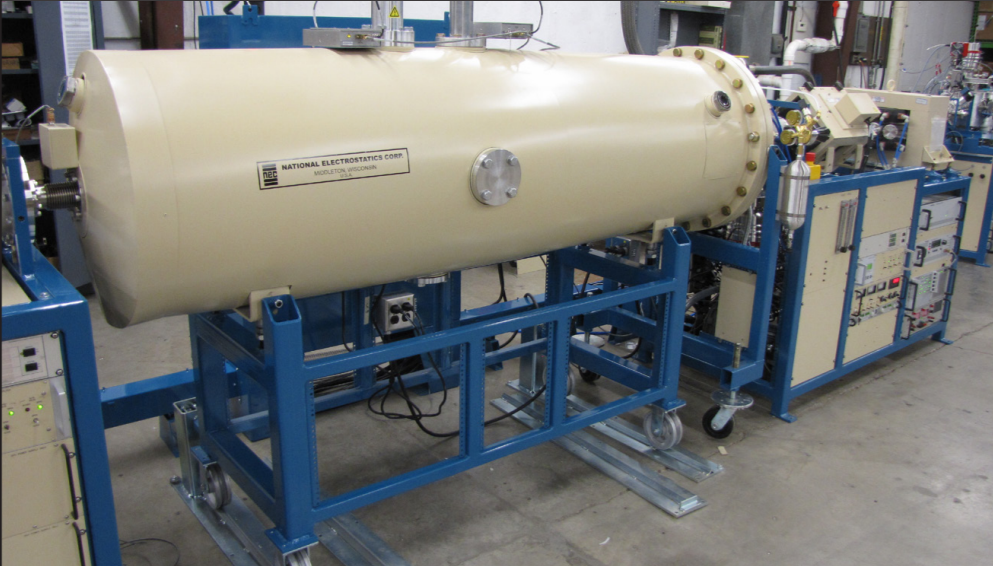
Pelletron 5SDH-2
- Information Depth: 10 nm – 10 μm
- Depth Resolution: 5 – 10 nm
- Maximum Incident Energy (He): 5.1 MeV
- Beam Spot Diameter:
- Standard: 2 mm
- Micro-RBS: 2 μm

Pelletron 3SDH
- Information Depth: 10 nm – 10 μm
- Depth Resolution: 5 – 10 nm
- Maximum Incident Energy (He): 3 MeV
- Beam Spot Diameter:
- Standard: 2 mm
- Micro-RBS: 2 μm
HRBS 500
- Information Depth: 1 nm – 30 nm
- Depth Resolution: 1 nm
- Maximum Incident Energy (He): 0.4 MeV
- Beam Spot Diameter: 2 mm
In RBS measurements, a beam of high-energy probe ions are accelerated towards target regions of a sample surface. Some of these incident ions are backscattered elastically, with variable kinetic energies proportional to the relative size (atomic number) of the sample atoms that scattered them. These backscattered ions are collected and the intensity (quantity) of ions detected are plotted as a function of their kinetic energies.
The resulting energy spectrum can then be fit using specialized analysis software to yield highly accurate measurements of elemental concentration (atomic %) in the sample surface. Because the technique is surface-selective, with an information depth of approximately 10 nm, depth profiles can be collected to measure composition as a function of sample depth for multilayer analysis or to characterize the composition of buried features.
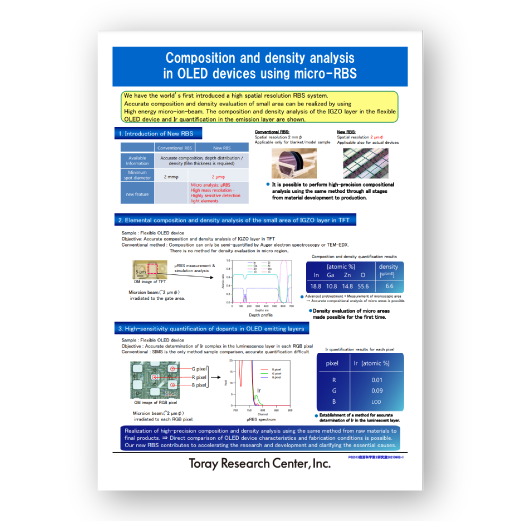
Composition and Density Analysis in OLED Devices Using...
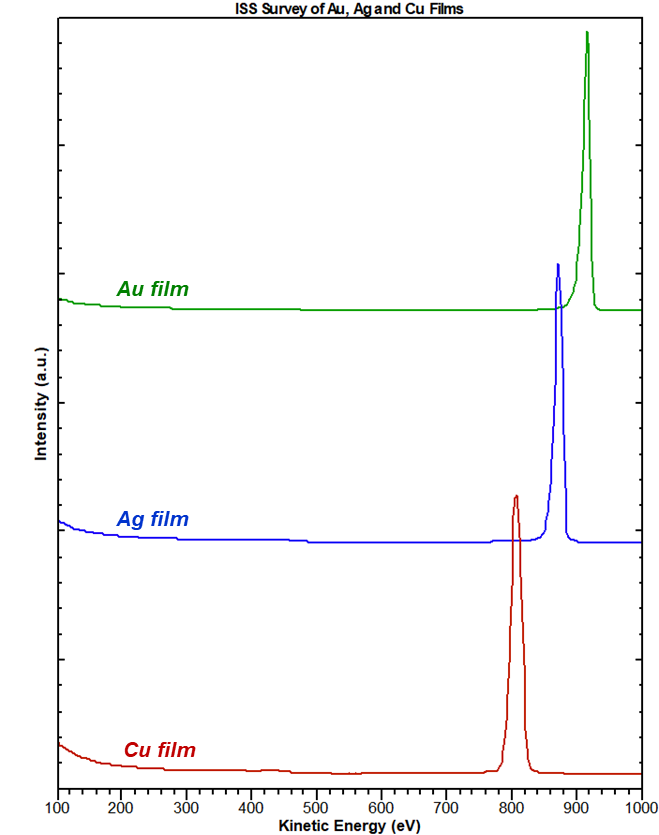
Ion Scattering Spectroscopy (ISS)
Ion scattering spectroscopy (ISS) provides quantitative elemental composition information from the very outermost atomic layer of a surface....
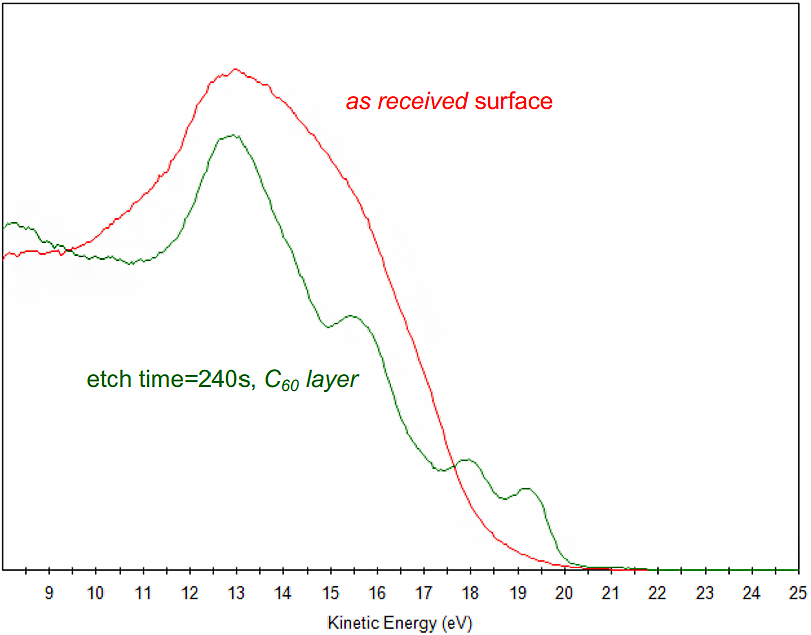
Ultraviolet Photoelectron Spectroscopy (UPS)
UPS is often performed in conjunction with X-ray Photoelectron Spectroscopy (XPS), a powerful surface chemical characterization technique. Unique...
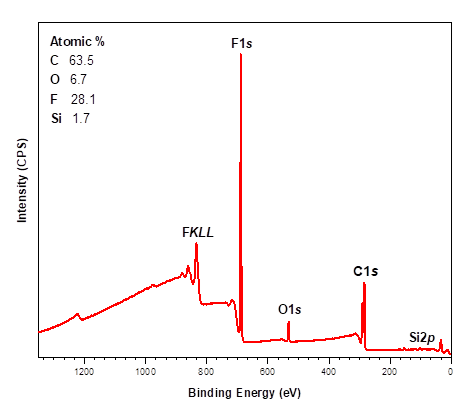
X-ray Photoelectron Spectroscopy (XPS)
X-ray photoelectron spectroscopy (XPS) is a highly surface-specific chemical analytical technique used to probe the elemental composition and...

